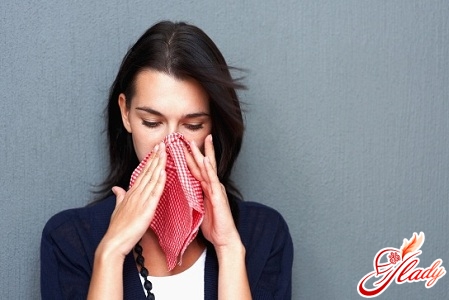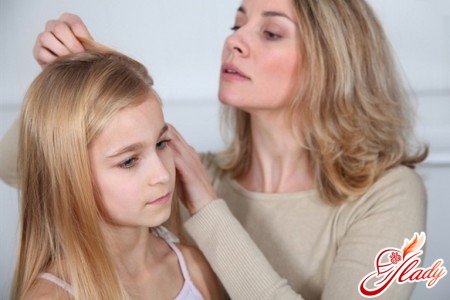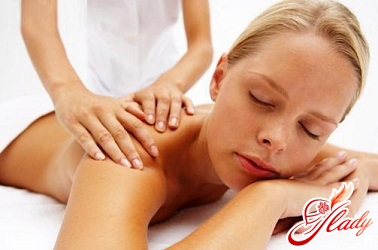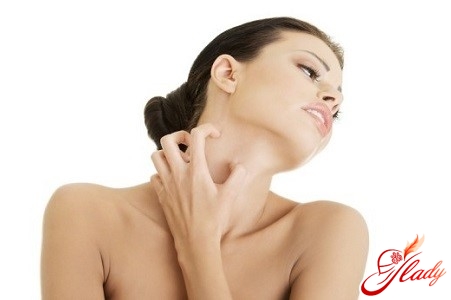
Skin rashes with itching can have many causes and be caused by various factors. In total, specialists distinguish about 10 primary changes in the skin, among which are:
- Macules (simple spots) - areas of skin with non-standard coloring up to 0.1 cm in diameter;
- Erythema - spots of the same type, but more than 0.1 cm in diameter;
- Papules - small elevations above the skin, nodules, up to 0.1 cm;
- Plaques - papules larger than 0.1 cm or a group of papules;
- A node is a formation inside the skin, often raised, with a diameter of 5-10 mm. A node larger than 20 mm can be considered a tumor;
- Vesicle (blister) - a formation containing serous exudate;
- Bulla (bubble) — formation, more than 5 mm in diameter;
- A pustule (a pustule) can occur as a result of infection of blisters and bubbles and has pus inside;
- Urticaria (blister) is a quickly disappearing formation that is caused by local swelling.
Not all skin rashes are itchy.But itching is not always accompanied by a mandatory change in skin color. It is known that general itching of the body can be caused by uremia, jaundice, leukemia, lymphoma, polycythemia. Many drugs containing salicylates and barbiturates cause itching. In addition, itchy conditions without external changes are caused by diabetes, hyperthyroidism, helminthiasis (parasitic infection), late stages of pregnancy, liver and kidney failure, nervous disorders. Therefore, if you often have itching without a reason, you should see a doctor and get examined.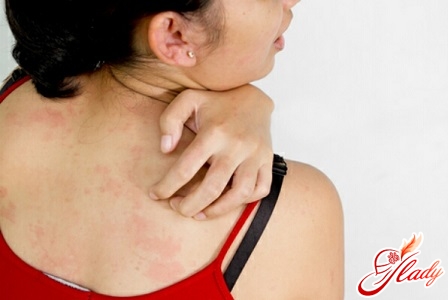
Severe itching causes scabies and drug allergies
Diseases that are accompanied by severeitching, primarily refers to scabies. It is caused by an ectoparasite, the scabies mite, the females of which implant themselves in the horny layers and lay eggs. The hatching larvae gather around the hair follicles, causing irritation. Skin rashes usually appear in the form of scabies passages on the hands, elbows, wrists, and feet. Vesicles without inflammation are noted near the passages. Itching intensifies in the evening and at night, especially when lying down. Scabies is transmitted by direct contact with an infected person. The disease is treated with drugs containing sulfur, benzyl benzoate, ointments containing tar, etc. Drug allergy causes a rash and itching all over the body. The disease may appear immediately after the drug is administered (usually similar to urticaria), or after a few hours (measles-like manifestations or maculopapular rashes) when using sulfanilamide or penicillin preparations. Acne-like rashes may occur after the use of bromides, iodides, hydantoins. When the body reacts to phenophthalein, tetracycline, sulfanilamide, clear purple geometrically correct rashes may appear, which appear each time after taking the drug in the same places. If the drugs contain gold, thiazides, as well as when using antimalarial drugs, papules may form, which then merge into spots with itching and peeling. Treatment of drug allergies is prescribed individually by a doctor, preventive work can be aimed at cleansing the gastrointestinal tract, normalizing the body as a whole. Unpleasant sensations haunt those who suffer from eczema. For example, its nummular variant is accompanied by coin-shaped rashes that become crusted and then itch intensely. The etiology of this disease has not yet been identified, but the appearance of the disease is often associated with increased dryness of the skin, which manifests itself in adulthood.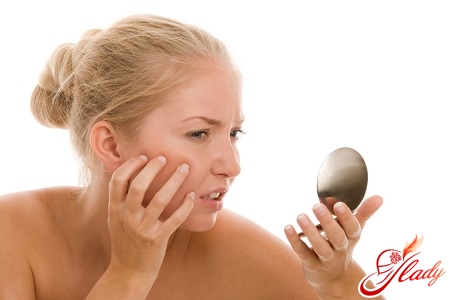
Through this, almost every child passes
Inflammation and itching of the skin almost alwaysevery child arises due to household allergies. Cheeks "bloom" especially often in the first six months of life, when the baby's body "gets acquainted" with various new substances and develops protective reactions to what it does not like. It is believed that allergic reactions are less common in breastfed babies (if the mother does not abuse chocolate, oranges, etc.) than in "artificial" babies. And the point is not so much that the mixture may be of poor quality, but that the baby with artificial feeding often eats more than he needs. This causes a lack of enzymes for digestion, therefore, food retention in the intestines, its rotting and absorption of harmful substances into the blood, which cause allergic reactions. Why should you not overfeed allergy sufferers? Therefore, allergic rashes are more common in well-fed than in thin, underfed children and adults. Treatment of household allergies involves following a dietary regimen, completely or partially eliminating allergenic products (food and household chemicals), maintaining a temperature regime (the air temperature in rooms for allergy sufferers should not be higher than 20°C) and personal and household hygiene measures. A person wearing airtight, dirty clothes in hot weather can cause a phenomenon known as prickly heat (common in infants). In this case, small red spots of a blister-like nature with transparent contents may appear on the neck, shoulders, and back, which itch slightly, but there is no fever or other painful symptoms. Prickly heat itself is not dangerous, but inflamed skin allows various microbes to enter the body. Therefore, in the heat, it is necessary to take water procedures in a timely manner, use soda compresses (a teaspoon of soda per glass of boiled water) to reduce itching. A weak (slightly pink) solution of potassium permanganate is suitable for antiseptic treatment of prickly heat elements.
Itching with insect bites
Insect bites and bites itch a lot,accompanied by some kind of rash. This is due to the fact that during a bite, for example, a mosquito, a microdose of liquid is injected, which prevents the blood from clotting during the insect's "lunch". This substance contains a protein that is a strong allergen for humans, which is why redness and itching occur. The use of ointments after infrequent bites is not always justified, so you can use traditional medicine. The simplest remedy is to smear the affected areas with fermented milk products, tea tree oil or fish oil. A solution of baking soda (1 teaspoon per glass of water, applied as a compress) and a solution of ammonia (1 tablespoon per 3 tablespoons of water, applied with a swab) have also proven themselves well. Itching and spreading redness from a bee sting in combination with a pale face, convulsions, a drop in pressure, and loss of consciousness are signs of anaphylactic shock. In this case, you need to call an ambulance immediately, because shock can develop into swelling of all mucous membranes of the body and lead to serious consequences. The minimum set of actions in this case consists of the following steps: remove the sting so as not to damage the capsule with venom (preferably with tweezers), wash the bite site with running water, blot and lubricate with hydrocortisone ointment or hydrogen peroxide. Apply cold to the damaged area so that the bee venom slows down its spread, give the patient an antihistamine.
Chickenpox, measles and scarlet fever
Almost everyone has had chickenpox in childhood.smallpox. This disease is accompanied by high fever, headaches, sometimes vomiting, diarrhea. Red bumps appear, which after a day turn into small blisters. At the same time, it is a big problem for parents to ensure that the rash is not scratched (so as not to introduce an infection) and to prevent contact with water. Chickenpox is quite easily transmitted, so children need to be isolated from each other, as well as limit contact with adults who have not previously had this disease. Chickenpox passes within 2-3 weeks, during which time the temperature normalizes, the blisters dry up and fall off. Pink spots remain under them, which will completely disappear in a couple of months. If you scratch the rash with chickenpox, you can bring in streptococci, which will cause suppuration, the need for antibiotics, as well as scars after recovery. Recurrence of this disease is extremely rare. Another "childhood" disease - Measles also gives a sequential rash of the following nature: on the first day, spots appear on the face and neck, on the second - on the trunk and arms, on the third - on the legs. At this time, the temperature rises (up to 40 ° C), whitish dots are noted on the mucous membrane of the cheeks, the lymph nodes increase. The patient is mainly prescribed antipyretics and the most comfortable conditions for treatment are created in terms of regimen. The rash can itch both during the course of the disease and during the period of resolution of the rash, when it peels, and the skin under it becomes lighter. With scarlet fever, itching appears simultaneously with the rash by the end of the first day of the disease. Skin reactions in this case are represented by small dots, which are localized on the folds of the limbs, lower abdomen and inner thighs. A white triangle is clearly visible in the nasolabial area (the rash is not noted here). Red spots can last up to a week, after which the skin peels off in "plates". The patient is prescribed antibacterial therapy and bed rest.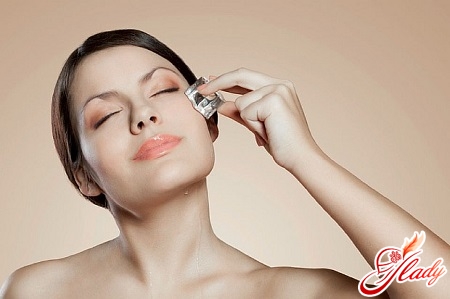
Rashes and itching in case of erysipelas, lichen
With erysipelas, the desire to scratchбольное место возникает на первых этапах возникновения ярко-красной эритемы, что сопровождается лихорадкой и признаками интоксикации. Кожные покровы в очаге поражения болезненны, напряжены, горячи, лимфатические узлы увеличены. Рожа представляет собой серьезное инфекционное заболевание, которое возникает после проникновения в травмированную кожу стрептококка. Ее лечат с помощью антибиотиков, УФО, УВЧ (для местного воздействия), слабых разрядов электротока. В тяжелых случаях назначают антибиотики пролонгированного действия, которые мешают стрептококку размножаться. Сильный зуд с высыпаниями пузыревого и пузырькового характера сопровождают такое заболевание, как опоясывающий лишай. Он вызывается вирусом герпесной группы (но не тем, который вызывает герпес на губах). Недуг может проявиться у людей, которые перенесли ветрянку, но при этом вирус не был полностью деактивизирован. Он может заявить о себе через десятилетия в виде высыпаний преимущественно в районе выхода нервных окончаний. Заболевание проходит самостоятельно через 2-4 недели, хотя у отдельных индивидов болезненные состояния могут длиться годами. В этом случае может применяться фамцикловир, ацикловир (противовирусные препараты), обезболивающие средства и кортикостероиды (для снятия зуда). Причина, по которой вирус переходит из состояния покоя в активную фазу, до сих пор не изучена. Еще до конца не изучена причина появления и другого вида лишая, сопровождающегося зудом, — это красный плоский лишай. Кто-то из врачей считает, что он имеет вирусную природу, другие полагают, что он может возникнуть на нервной почве на фоне общего ослабления организма. Плоские красные пятна появляются чаще всего на локтевых сгибах, голенях, пояснице, бедрах, животе, подмышками. Они имеют диаметр от 1 см и более и шероховатую поверхность. Лечение заболевания проводят посредством наружной обработки зудящих поверхностей (70% спирт плюс 1% хлоргидрат плюс последующая обработка глюкоортикоидными мазями), назначением радоновых и сероводородных ванн. При невротических реакциях дают препараты валерианы, брома, определенные витамины группы В. Если выражены инфекционные очаги, то их санируют антибиотиками (макролиды, тетрациклин) на протяжении 1-2 недель. Фурункулы зудят на начальной стадии При фурункулезе зуд на коже появляется перед тем, как на поверхность «выйдут» фурункулезные единицы, данный период развития заболевания занимает около 3-х дней. Это заболевание в основном вызывается золотистым стафилококком, может развиваться на любом месте кожного покрова, но наиболее опасными считаются фурункулы в области лица (особенно у детей). После нескольких дней назревания, в течение которых у больного может быть повышена температура, фурункул преобразуется в гнойник, из которого выходит при вскрытии ткань некротического характера. Фурункулезные очаги нельзя выдавливать самостоятельно, это делает только опытный хирург, во избежание дальнейшего распространения инфекции. Дополнительными средствами лечения являются применение мази Вишневского, уколы антибиотиками, соблюдении диеты, гигиенических процедур. Если фурункулов много, то не рекомендуется мыться, а обработку здоровой кожи нужно проводить раствором фурацилина.
Hives can cause even a cold shower
You can get a rash and itching on your skin, simplyafter taking a hot shower or exercising. This reaction is caused by cholinergic urticaria, which manifests itself as a small-point rash with severe itching. Cold urticaria in people sensitive to cold water is caused by a cold stream. The disease can also be caused by sensitivity to vibrations, pressure, one or another type of light (sun, ultraviolet, etc.). Treatment in this case consists primarily in eliminating the irritant. In some cases, itching with urticaria can be a very "small evil", since some of its forms (Quincke's edema), which manifest themselves in the form of giant edema, the size of a chicken egg, can lead to death. Giant urticaria is especially dangerous when it manifests itself in the larynx, since this can lead to suffocation. Fungi and nerves are to blame for everything Skin rashes accompanied by itching can be signs of candidiasis. In this case, under the mammary glands, in the gluteal fold, in the groin, between the fingers and toes, itchy exudative spots often appear, bordered by small pustules. The disease, known to the population as thrush, is caused by a fungus that is present in every human body, but often, due to weakened immunity, begins to multiply too much. Treatment consists of external treatment of the skin with a 5-10% solution of sodium tetracarbonate, taking natacimin, fluconazole, miconazole, etc. internally. Of course, you need to remember the popular wisdom: all diseases come from nerves. And neurodermatitis in this case is just a confirmation of these words. The disease is a chronic skin disease in which dry, itchy, flaky plaques with thickened areas are constantly present on the skin. The disease is provoked by a psychogenic factor and is more common in women aged 20 to 50, American Indians and people of Asian descent. The main methods of treatment are psychocorrection. Most often, the back of the head, ankles and arms are scratched. With nervous tension, itching intensifies, can become a habit and give unconscious actions to eliminate itching. It should be noted that there are serious diseases with rashes, which, however, are not accompanied by pronounced itching. These include pemphigus, syphilis, lupus, infectious erythema (with it, the first signs of the disease are often similar to the flu, itching only in the nose, and the rash does not always appear in adult patients), etc. Therefore, in case of pronounced long-term skin problems and itching, it is better to consult a specialist.




